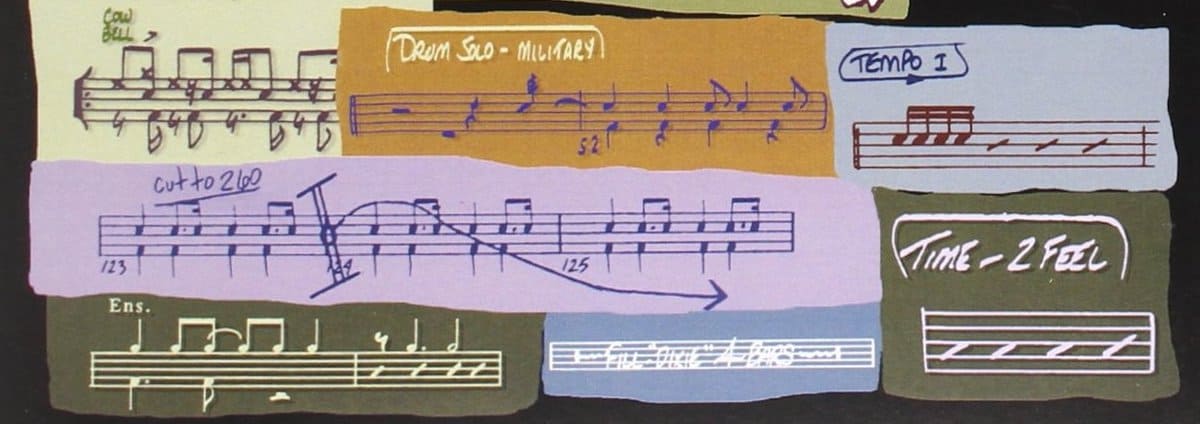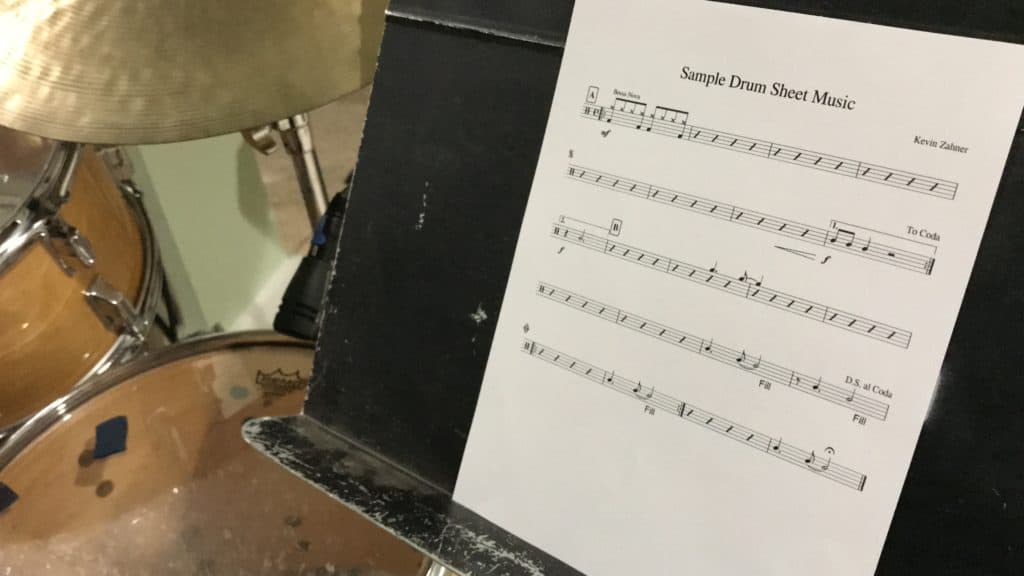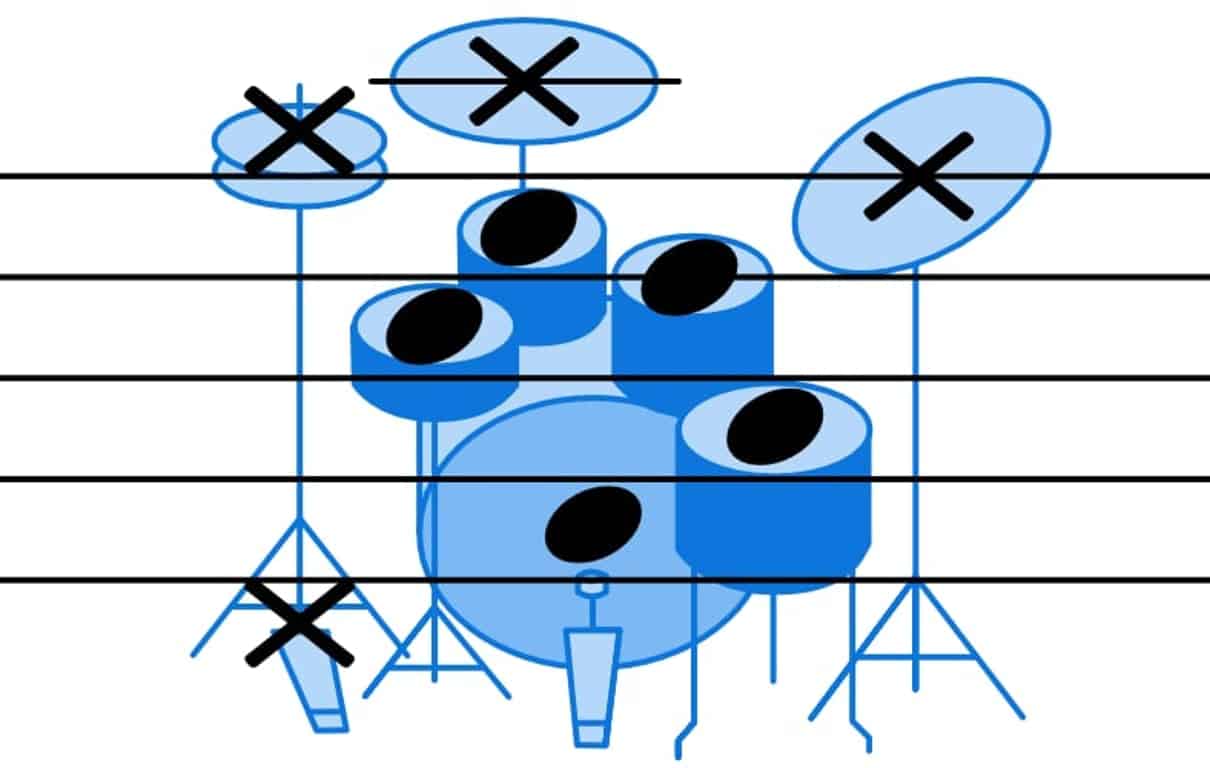How To Read Drum Music? When it comes to playing the drums, understanding how to read drum music is an essential skill that can take your playing to the next level. As a drummer, I know the importance of being able to read drum notation and how it can open up a world of opportunities for musical expression.
In this article, we will delve into the basics of drum music notation, sight-reading techniques, systematic learning approaches, and real-life applications of drum music reading skills.
Understanding the basics of drum music notation

Learning the staff and notes
One of the first steps in learning how to read drum music is understanding the staff and notes. The staff consists of five lines and four spaces, each representing a different drum or cymbal in a drum set. The notes on the staff indicate which drum or cymbal to play and at what time. For example, a note on the bottom line of the staff may represent the bass drum, while a note on the top space may represent the hi-hat.
Understanding time signatures and rhythm
Time signatures are crucial in drum music notation as they indicate the number of beats in each measure and which note value receives one beat. Common time signatures in drum music include 4/4, 3/4, and 6/8. Understanding time signatures and rhythm is essential for accurately interpreting drum notation and playing with precision.
Practicing sight-reading drum music

Start with simple exercises
When practicing sight-reading drum music, it’s important to start with simple exercises to build a strong foundation. Begin with basic rhythms and gradually progress to more complex patterns as your skills improve. This approach allows for steady growth and prevents feeling overwhelmed by advanced notation early on.
Use a metronome
A metronome is a valuable tool for practicing sight-reading drum music. It helps you maintain a steady tempo and develop a sense of timing and rhythm. Start at a comfortable tempo and gradually increase the speed as you become more proficient in reading drum notation.
Practice with different styles of music
Exposing yourself to various styles of music, such as rock, jazz, funk, and Latin, can enhance your sight-reading skills. Each genre has its own unique rhythmic patterns and drum notation, providing valuable experience in interpreting diverse musical styles.
Developing a systematic approach to learning drum music

Break down the music into smaller sections
When faced with complex drum notation, breaking down the music into smaller sections can make it more manageable. Focus on mastering one section at a time before moving on to the next, ensuring a thorough understanding of each part before progressing.
Focus on specific patterns and fills
Identifying and practicing specific drum patterns and fills within a piece of music can help improve your overall drum music reading skills. By isolating these elements, you can dedicate focused practice to mastering them, leading to greater proficiency in reading and performing drum notation.
Utilize online resources and tutorials
Online resources, such as video tutorials and interactive drum notation platforms, can be valuable tools for learning drum music. These resources offer visual and auditory aids that complement traditional learning methods, providing a well-rounded approach to mastering drum notation.
Applying drum music reading skills to real-life situations

Playing along with a band or backing tracks
One of the best ways to apply your drum music reading skills is by playing along with a band or backing tracks. This real-life application allows you to synchronize your reading abilities with live music, honing your ability to interpret and perform drum notation in a dynamic musical setting.
Improvising and creating your own drum parts
Once you have a solid grasp of reading drum music, you can begin to improvise and create your own drum parts. This creative process not only reinforces your understanding of drum notation but also fosters musical expression and individuality in your playing.
Conclusion on How To Read Drum Music
 Learning how to read drum music is a valuable skill that can greatly enhance your drumming abilities. By understanding the basics of drum music notation, practicing sight-reading techniques, developing a systematic learning approach, and applying your skills to real-life musical situations, you can become a proficient and versatile drummer. With dedication and consistent practice, mastering drum music reading will open up a world of musical possibilities and elevate your drumming to new heights.
Learning how to read drum music is a valuable skill that can greatly enhance your drumming abilities. By understanding the basics of drum music notation, practicing sight-reading techniques, developing a systematic learning approach, and applying your skills to real-life musical situations, you can become a proficient and versatile drummer. With dedication and consistent practice, mastering drum music reading will open up a world of musical possibilities and elevate your drumming to new heights.
FAQs
-
How do drummers remember what to play?
Write down or program the part. Many drummers find that writing out the song (or tricky part) helps them to better internalize patterns. If your brain has already broken down the parts, it’ll be easier to know what you need to do when you sit down on the kit.
-
Can drums be self taught?
Within a year of consistent, focused practice, you can certainly expect to learn the basics of drumming, including proper grip and posture, basic rudiments, a few standard beats, and some simple fills. You might even be able to play along to some of your favorite songs!
Originally posted 2023-11-14 02:55:20.

